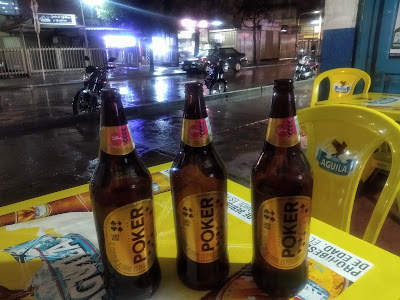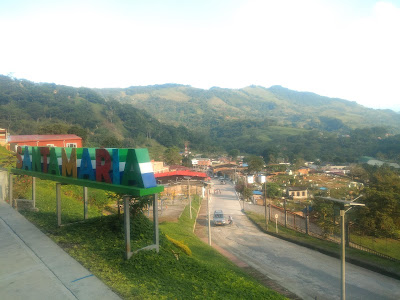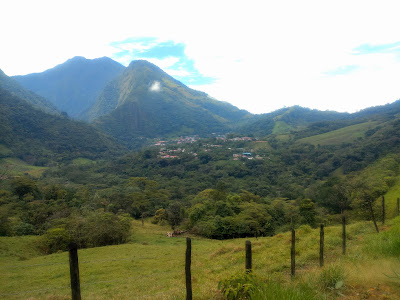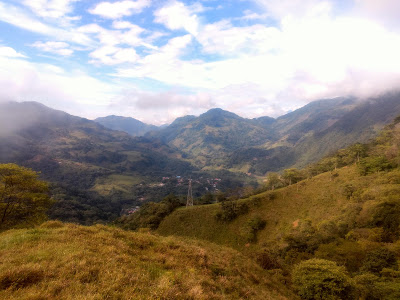@wwaycorrigan
[Listen to an audio version of this blog entry here.]
One has to admire an individual who realises that he/she has a personal problem and takes corrective action. As a species, we are often quick to see the faults of others yet are blind to our own shortcomings.
 |
| There are always hurdles to overcome on the path to cleaner living ... |
When it comes to drug addiction or simply just bad/self-destructive habits with mind-altering substances, be they legal or otherwise, stopping the rot can be particularly tricky.
With alcohol consumption, the widely accepted socialising drug, a heretofore regular drinker may have to change his/her life considerably, at least initially, to say no.
Personally, if I decided to cut beer drinking entirely from my life, I think I'd have to leave Bogotá. Or at least move out of my current barrio. This is because the majority of my socialising revolves around the tienda and with it a few litrazos (a litre bottle, that is) of Poker.
I hasten to add that this isn't a daily occurrence. Two or three times per week, max. And, with age, I'm getting better, for the most part, at knowing when I've had my fill even if, to use an Irish word, the craic is mighty when I decide to head home (do note, craic here means 'enjoyable social activity', lest one think of something else).
It's because I'm more in the jomo (joy of missing out) camp these days rather than with the fomo (fear of missing out) brigade.
'From a marijuana chain smoker and seemingly daily beer drinker — not a good combination for a taxi driver — to a fundamentalist Christian (of sorts) in a few weeks.'Yet, for those who have trouble knowing when to stop imbibing and the like, a lively-ish city with a beer-drinking culture can be quite a dangerous place to be. There are, quite literally, temptations at every corner.
Thus, in such circumstances, when one reaches a point where it's a case of 'make lifestyle changes now or be left with no life', it requires quite an amount of willpower to overcome the "demons".
Christian convalescence
Some, as I touched on a few years ago in Strength in belief, find the answer to their problems in God.
One barrio friend has recently taken this path. From a marijuana chain smoker and seemingly daily beer drinker — not a good combination for a taxi driver — to a fundamentalist Christian (of sorts) in a few weeks.
While I may not agree with his new-found religious beliefs — or if not exactly new-found, at least renewed enthusiasm for Christianity — I am impressed with the transformation. Considering his previous form, it could be said the end — in this case, being "clean" — justifies the means.
What's more, he has changed his ways without becoming a recluse. Apart from a few weeks back in the land of his birth on Colombia's Caribbean coast, he's still to be found socialising in the barrio, just this time with a gaseosa (fizzy drink) in hand rather than a beer (we'll cut him a little slack for the dangerous sugar indulgence).
As I've mentioned above, I'm not sure if I could do the same; hang out in the barrio and not drink beer. Not indefinitely in any case. I'd simply prefer not to go out.
I like to think that if I decided to go cold turkey, I could do it more easily in the countryside. A rural retreat, removed, as best one can be, from other human beings with fewer potentially harmful temptations.
There is another school of thought suggesting that if one were to "settle down" i.e. enter a relationship, this would also "tame the beast" so to put it. Whatever the dubious truth of that, one may be just too accustomed to singlehood for it to happen any time soon.
So Mother Nature and a modicum of isolation; I see that as my path to cleaner living, should I decide that it's needed. That's the theory anyway.
City life, its many evils notwithstanding, does, however, still have its advantages and appeal. At times.
_______________________________________________________________
Listen to Wrong Way's Colombia Cast podcast here.
Facebook: Wrong Way Corrigan — The Blog & IQuiz "The Bogotá Pub Quiz".








